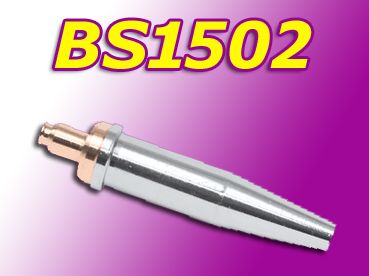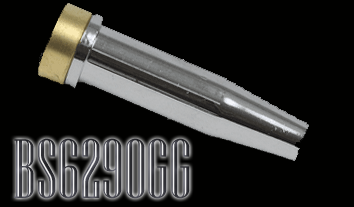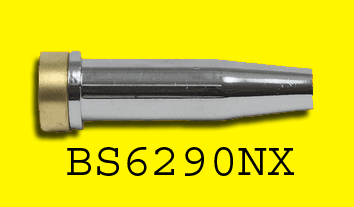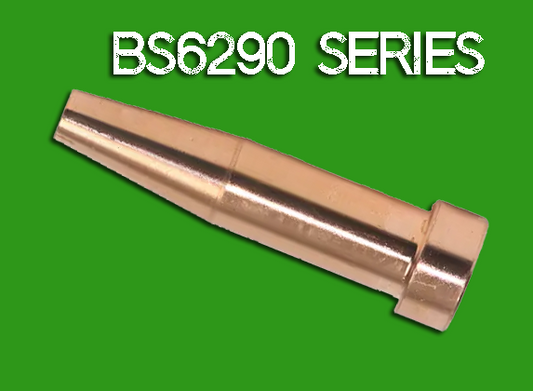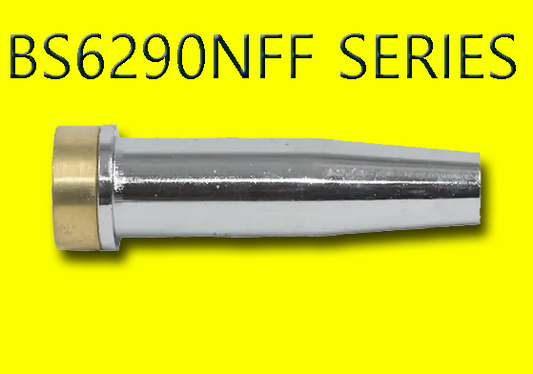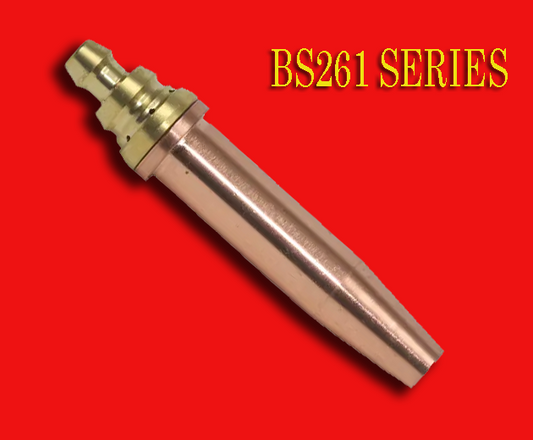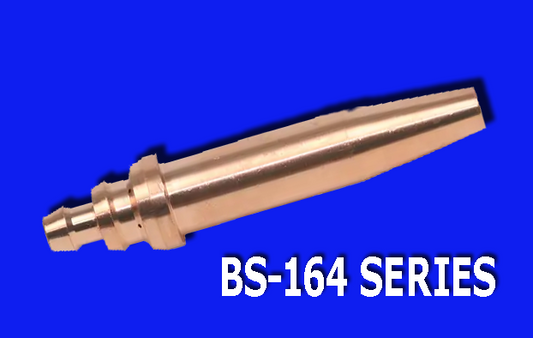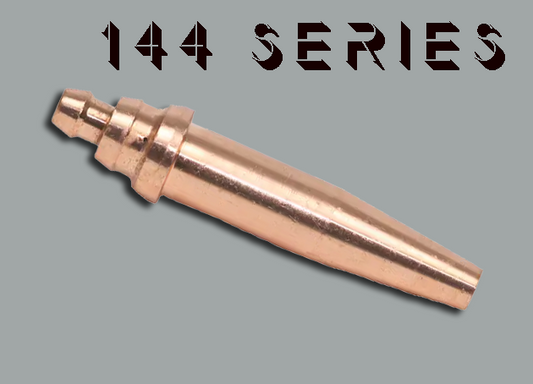Collection: Cutting Tips
Cutting tips come in one-piece and two-piece styles. One-piece tips are used with acetylene and are made from copper alloy to withstand the heat of the cutting process. The copper alloy is machined, drilled, and swaged over special wires to produce exact holes for preheats and cutting oxygen bores.
Cutting Tip Overview
1. Seat Type
This is determined by brand. You must know the manufacturer or model of your torch and/or the part number of the cutting tips you want to replace as this determines the seat type.
If this important step is skipped, damage to the equipment or dangerous flammable gas leakage can result. Tip seats vary greatly with torch model.
2. Metal Thickness
The thickness of the metal being cut is very important because the center hole of the cutting and gouging tip is sized to deliver the proper amount of oxygen at the proper pressure for a specific thickness. The preheat orifice is also sized to handle the proper amounts of mixed gas to heat a given thickness of metal adequately. Oxy-fuel equipment is capable of cutting mild steel from 3 mm (1/8”) to 300 mm (12”).
3. Application
Tips are designed specifically for the applications in which they are to be used. There are different tips used for cutting, gouging, and heating. They may be one piece of solid copper, or a two-piece hybrid with a brass inner piece and a copper outer piece. Some cutting tips are specially designed to use with automated cutting machinery for high-pressure cutting that permits quicker, cleaner, more accurate cuts.
4. Fuel Gas
There are many types of gases used in oxy-fuel cutting operations. Cutting tips, designed differently for each fuel gas, optimize how the oxygen and gas are delivered.

